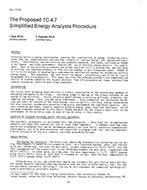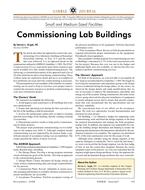Energy savings performance contracts (ESPCs) are a method of financing energy conservation projects using the energy cost savings generated by the conservation measures themselves. Ideally, reduced energy costs are visible as reduced utility bills, but in fact this is not always the case. On large military bases, for example, a single electric meter typically covers hundreds of individual buildings. Savings from an ESPC involving only a small number of these buildings will have little effect on the overall utility bill. In fact, changes in mission, occupancy, and energy prices could cause substantial increases in utility bills. For this reason, other, more practical, methods have been developed to measure and verify savings in ESPC projects. Nevertheless, increasing utility bills—when ESPCs are expected to be reducing them—are problematic and can lead some observers to question whether savings are actually being achieved.
In this paper, the authors use utility bill analysis to determine energy, demand, and cost savings from an ESPC project that installed geothermal heat pumps in the family housing areas of the military base at Fort Polk, Louisiana. The savings estimates for the first year after the retrofits were found to be in substantial agreement with previous estimates that were based on submetered data. However, the utility bills also show that electrical use tended to increase as time went on. Since other data show that the energy use in family housing has remained about the same over the period, the authors conclude that the savings from the ESPC have persisted, and increases in electrical use must be due to loads unassociated with family housing. This shows that under certain circumstances, and with the proper analysis, utility bills can be used to estimate savings from ESPC projects. However, these circumstances are rare and over time the comparison may be invalidated by increases in energy use in areas unaffected by the ESPC.
Citation: ASHRAE Trans. vol. 112, pt. 2, paper no. QC-06-007, p. 65-75
Product Details
- Published:
- 2006
- Number of Pages:
- 11
- File Size:
- 1 file , 560 KB
- Product Code(s):
- D-28728


